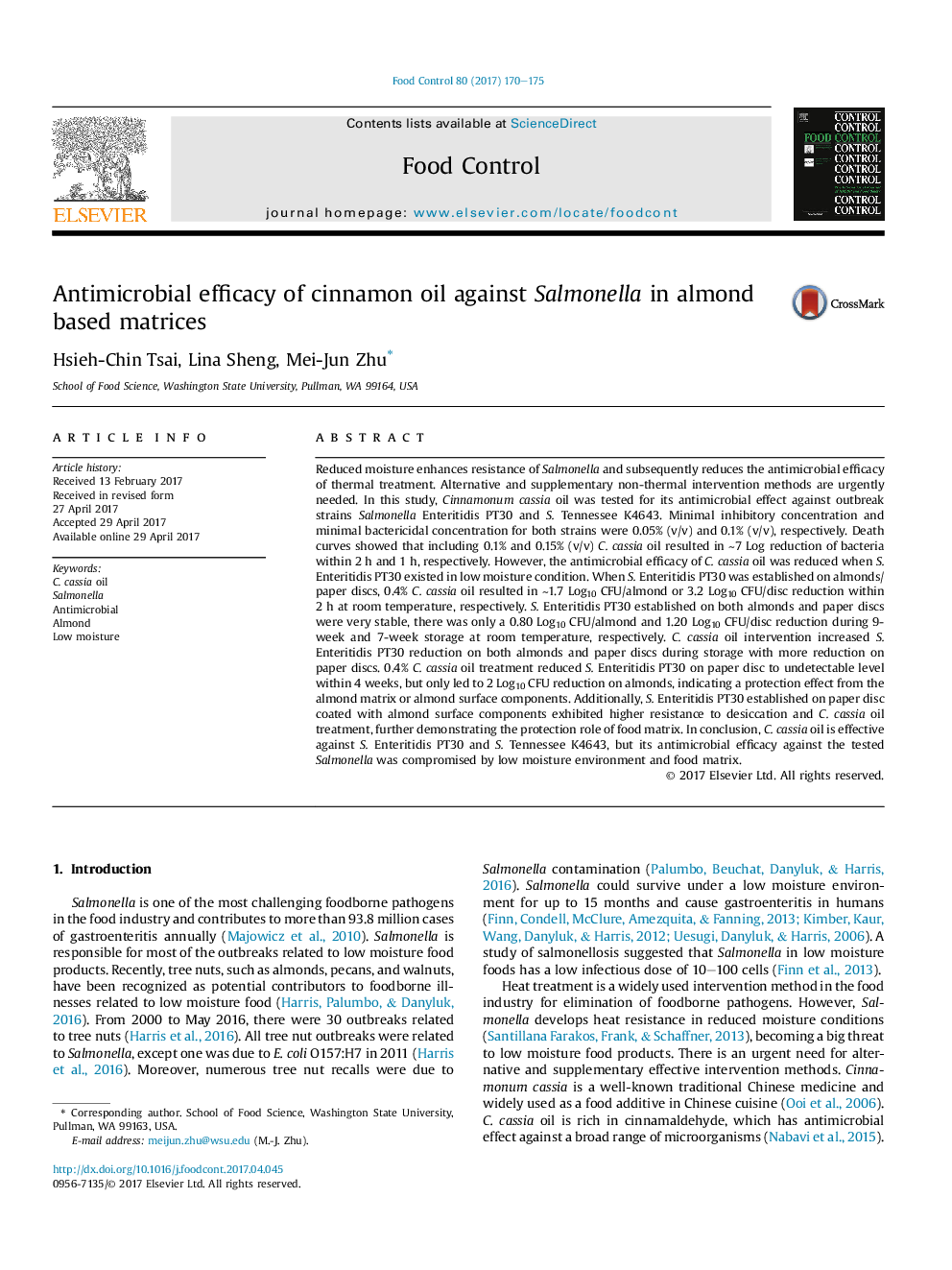| Article ID | Journal | Published Year | Pages | File Type |
|---|---|---|---|---|
| 5767239 | Food Control | 2017 | 6 Pages |
â¢Cinnamon oil is effective in inhibiting outbreak strains Salmonella Enteritidis PT30 and Salmonella Tennessee K4643.â¢Desiccation increases Salmonella resistance to cinnamon oil.â¢Almond skin mixture enhanced Salmonella resistance to desiccation and cinnamon oil.â¢Paper discs loaded with food comments are a good model system for microbial resistance study.
Reduced moisture enhances resistance of Salmonella and subsequently reduces the antimicrobial efficacy of thermal treatment. Alternative and supplementary non-thermal intervention methods are urgently needed. In this study, Cinnamonum cassia oil was tested for its antimicrobial effect against outbreak strains Salmonella Enteritidis PT30 and S. Tennessee K4643. Minimal inhibitory concentration and minimal bactericidal concentration for both strains were 0.05% (v/v) and 0.1% (v/v), respectively. Death curves showed that including 0.1% and 0.15% (v/v) C. cassia oil resulted in â¼7 Log reduction of bacteria within 2 h and 1 h, respectively. However, the antimicrobial efficacy of C. cassia oil was reduced when S. Enteritidis PT30 existed in low moisture condition. When S. Enteritidis PT30 was established on almonds/paper discs, 0.4% C. cassia oil resulted in â¼1.7 Log10 CFU/almond or 3.2 Log10 CFU/disc reduction within 2 h at room temperature, respectively. S. Enteritidis PT30 established on both almonds and paper discs were very stable, there was only a 0.80 Log10 CFU/almond and 1.20 Log10 CFU/disc reduction during 9-week and 7-week storage at room temperature, respectively. C. cassia oil intervention increased S. Enteritidis PT30 reduction on both almonds and paper discs during storage with more reduction on paper discs. 0.4% C. cassia oil treatment reduced S. Enteritidis PT30 on paper disc to undetectable level within 4 weeks, but only led to 2 Log10 CFU reduction on almonds, indicating a protection effect from the almond matrix or almond surface components. Additionally, S. Enteritidis PT30 established on paper disc coated with almond surface components exhibited higher resistance to desiccation and C. cassia oil treatment, further demonstrating the protection role of food matrix. In conclusion, C. cassia oil is effective against S. Enteritidis PT30 and S. Tennessee K4643, but its antimicrobial efficacy against the tested Salmonella was compromised by low moisture environment and food matrix.
